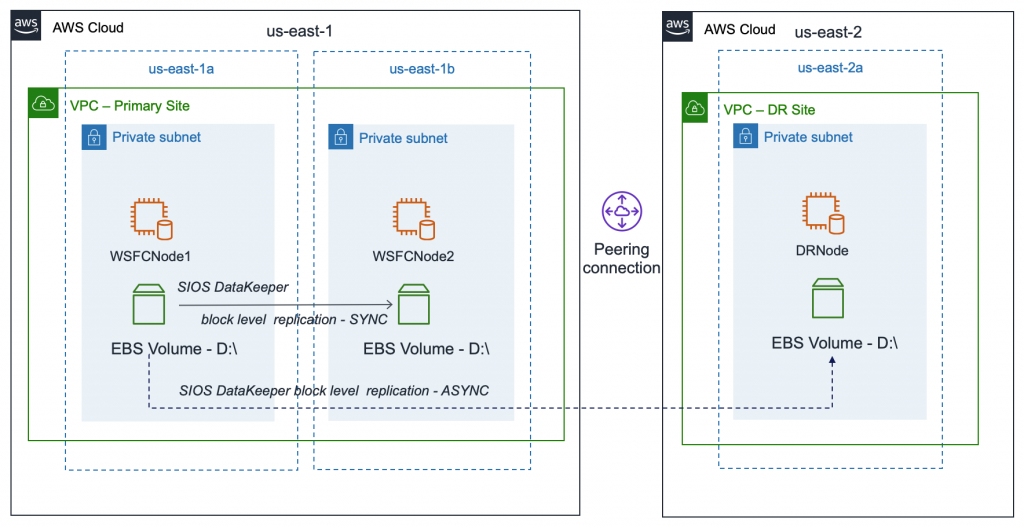AWS Architecture Blog
Category: Networking & Content Delivery
Connect Amazon S3 File Gateway using AWS PrivateLink for Amazon S3
AWS Storage Gateway is a set of services that provides on-premises access to virtually unlimited cloud storage. You can extend your on-premises storage capacity, and move on-premises backups and archives to the cloud. It provides low-latency access to cloud storage by caching frequently accessed data on premises, while storing data securely and durably in the […]
Field Notes: How to Scale Your Networks on Amazon Web Services
As AWS adoption increases throughout an organization, the number of networks and virtual private clouds (VPCs) to support them also increases. Customers can see growth upwards of tens, hundreds, or in the case of the enterprise, thousands of VPCs. Generally, this increase in VPCs is driven by the need to: Simplify routing, connectivity, and isolation […]
Improving Performance and Reducing Cost Using Availability Zone Affinity
April 2025: This blog post has been updated to include new features in Elastic Load Balancing (ELB). One of the best practices for building resilient systems in Amazon Virtual Private Cloud (VPC) networks is using multiple Availability Zones (AZ). An AZ is one or more discrete data centers with redundant power, networking, and connectivity. Using […]
What to Consider when Selecting a Region for your Workloads
The AWS Cloud is an ever-growing network of Regions and points of presence (PoP), with a global network infrastructure that connects them together. With such a vast selection of Regions, costs, and services available, it can be challenging for startups to select the optimal Region for a workload. This decision must be made carefully, as […]
Disaster Recovery (DR) for a Third-party Interactive Voice Response on AWS
Voice calling systems are prevalent and necessary to many businesses today. They are usually designed to provide a 24×7 helpline support across multiple domains and use cases. Reliability and availability of such systems are important for a good customer experience. The thoughtful design of a cost-optimized solution will allow your business to sustain the system […]
Securely Ingest Industrial Data to AWS via Machine to Cloud Solution
As a manufacturing enterprise, maximizing your operational efficiency and optimizing output are critical factors in this competitive global market. However, many manufacturers are unable to frequently collect data, link data together, and generate insights to help them optimize performance. Furthermore, decades of competing standards for connectivity have resulted in the lack of universal protocols to […]
Augmenting VMware Cloud on AWS Workloads with Native AWS services
VMware Cloud on AWS allows you to quickly migrate VMware workloads to a VMware-managed Software-Defined Data Center (SDDC) running in the AWS Cloud and extend your on-premises data centers without replatforming or refactoring applications. You can use native AWS services with Virtual Machines (VMs) in the SDDC, to reduce operational overhead and lower your Total […]
Field Notes: Implementing HA and DR for Microsoft SQL Server using Always On Failover Cluster Instance and SIOS DataKeeper
This blog post was co-written by Sudhir Amin, Sr. Solution Architect, AWS, and David Bermingham, Senior Technical Evangelist, SIOS Technology, Inc. To ensure high availability (HA) of Microsoft SQL Server in Amazon Elastic Compute Cloud (Amazon EC2), there are two options: Always On Failover Cluster Instance (FCI) and Always On availability groups. With a wide […]
Implementing Multi-Region Disaster Recovery Using Event-Driven Architecture
In this blog post, we share a reference architecture that uses a multi-Region active/passive strategy to implement a hot standby strategy for disaster recovery (DR). We highlight the benefits of performing DR failover using event-driven, serverless architecture, which provides high reliability, one of the pillars of AWS Well Architected Framework. With the multi-Region active/passive strategy, your workloads […]
Choosing Your VPC Endpoint Strategy for Amazon S3
This post was co-written with Anusha Dharmalingam, former AWS Solutions Architect. Must your Amazon Web Services (AWS) application connect to Amazon Simple Storage Service (Amazon S3) buckets? Must the connection scale to accommodate bandwidth demands? AWS offers a mechanism called VPC endpoint to meet these requirements. This blog post provides guidance for selecting the right […]









